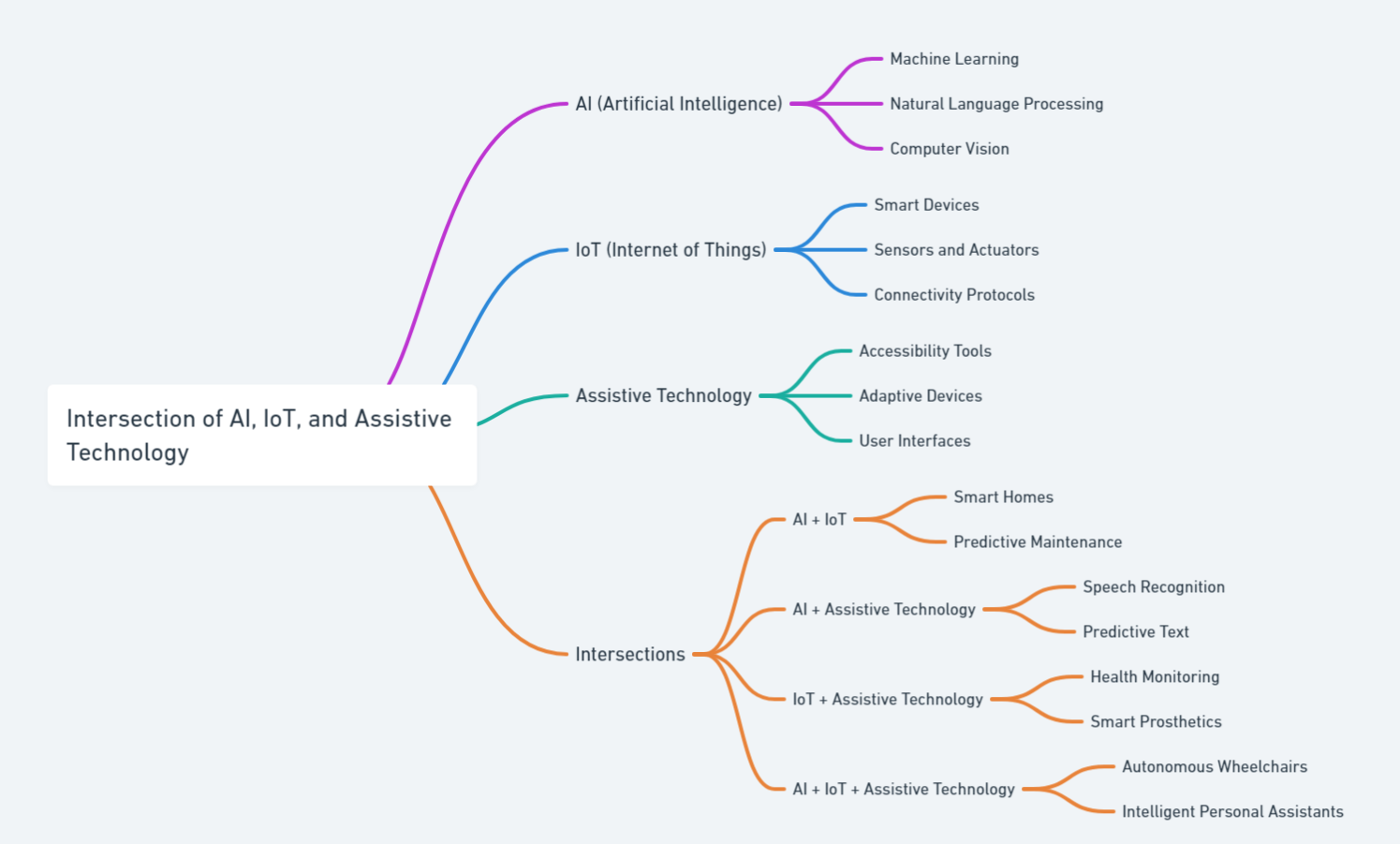Personal Stories: How AI and IoT Are Transforming Assistive Tech and Changing Lives
2024-05-28 | By Orcam Staff

The world is on the brink of a technological revolution that stands to reshape the way we live, work, and interact with our environment. Artificial Intelligence (AI) and the Internet of Things (IoT) are at the forefront of this change, especially in the field of assistive technology. These innovative solutions are not just theoretical concepts; they are real, tangible tools that are improving lives today. In this article, we'll explore some personal experiences with smart accessibility solutions and delve into the transformative power of AI and IoT in assistive tech.
The Rise of Assistive Technology

In recent years, there has been a significant surge in the development of assistive technology. This growth is fueled by the advancements in AI and IoT, which have made it possible to create more effective, efficient, and user-friendly devices and applications. Assistive technology now encompasses a vast array of tools, from voice-activated devices and smart home systems to AI-driven applications that can interpret sign language or transcribe speech in real-time.
The Impact of AI on Disability Assistance
AI has the potential to provide unprecedented levels of independence for individuals with disabilities. By leveraging machine learning and data analysis, AI systems can adapt and respond to the unique needs of users, offering personalized support that was once thought impossible. From virtual assistants that help navigate daily tasks to complex algorithms that can predict and prevent health issues, AI is revolutionizing the way we approach disability assistance.
IoT's Role in Creating Connected Accessibility
IoT devices are all about connectivity and interactivity. These smart gadgets can communicate with each other, offering a seamless and integrated experience for users. For people with disabilities, this means being able to control various aspects of their environment with minimal effort – from adjusting the thermostat to locking doors, all through simple voice commands or smartphone apps.
Real-Life Examples of Assistive Tech
Let's take a closer look at some of the real-life examples where AI and IoT have made a significant impact on the lives of individuals with disabilities.
Smart Homes for the Visually Impaired
For those with visual impairments, navigating a home can be challenging. Smart home technologies have changed this dynamic by providing voice-activated control over lighting, heating, and entertainment systems. These advancements not only enhance comfort but also promote safety and independence. A notable solution is OrCam MyEye, a wearable device that reads text, recognizes faces, and identifies products, offering unparalleled support for visually impaired users.
Wearables That Empower
Wearable technology, such as smartwatches and fitness trackers, have been adapted to serve the needs of people with disabilities. These devices can monitor vital signs, track medication schedules, and even detect falls, sending alerts to caregivers or emergency services when necessary.
AI-Powered Prosthetics
Prosthetics have seen a significant transformation with the integration of AI. Modern prosthetic limbs can now learn and adapt to the user's movements, providing a more natural and intuitive experience. This technology has restored mobility and autonomy to many individuals, enabling them to engage in activities they love with greater ease.
Personal Experiences with Smart Accessibility Solutions
The true measure of these technologies lies in the personal stories of those whose lives they've touched. Here are a few transformative assistive technology stories that highlight the impact of AI and IoT on individuals with disabilities.
John's Journey with a Smart Home System
John, a 35-year-old man with visual impairment, found independence through smart home technologies. He shares how voice-activated controls allow him to manage his daily routine without assistance. "Being able to control my environment with my voice has given me a sense of freedom I never thought possible," says John.
Emma’s Experience with AI-Powered Prosthetics
Emma, a young athlete who lost her leg in an accident, talks about how AI-powered prosthetics have allowed her to return to sports. She describes the adaptability and intuitive movement the prosthetic offers. "The AI in my prosthetic learns how I move, making it feel like a natural part of me," Emma explains.
Alex's Communication Breakthrough with AI Apps
Alex, a teenager with a severe speech disorder, uses AI-powered speech-to-text apps to communicate with his friends and family. He shares his journey from isolation to inclusion. "For the first time, I can express myself easily and be understood," Alex says with a smile.
Sophia’s Newfound Independence with Smart Wheelchairs
Sophia, who has cerebral palsy, explains how her smart wheelchair has transformed her daily life. The wheelchair's ability to navigate and learn her preferred routes has given her greater autonomy. "I can move around freely and confidently, knowing my wheelchair will keep me safe," Sophia shares.
AI and IoT Accessibility Success Stories
The following success stories demonstrate the profound effect that AI and IoT can have in empowering people with disabilities.
The Independence of Smart Wheelchairs
Smart wheelchairs equipped with AI and IoT technology can navigate complex environments, avoid obstacles, and even learn the preferred routes of their users. These advancements provide a level of independence that was once unattainable for many wheelchair users.
Bridging Communication Gaps
AI-driven language processing tools have made it possible for non-verbal individuals to communicate through alternative methods. Devices that track eye movement or interpret muscle signals can translate intentions into words, granting a voice to those who were previously without.
Enhancing Education for All
Educational software that adapts to the learning pace and style of students with disabilities has opened up new possibilities in education. AI-driven programs can offer customized learning experiences, ensuring that all students have the opportunity to thrive.
The Future of Transformative Assistive Technology
As we look to the future, it's clear that AI and IoT will continue to play a pivotal role in the evolution of assistive technology. The potential for these innovations to transform lives is immense, and as technology advances, we can expect to see even more groundbreaking solutions emerge.
The Promise of Personalized Assistance
With the continued development of AI, assistive technology will become even more personalized, adapting in real-time to the evolving needs of users. This bespoke approach will ensure that assistance is always relevant and effective.
Expanding the Reach of IoT
The proliferation of IoT devices will further enhance the interconnectedness of our environments. As more objects become 'smart', the potential for creating fully integrated and accessible spaces increases, offering greater independence and quality of life for people with disabilities.
Takeaways
The stories and examples shared in this article help illustrate the transformative power of AI and IoT in assistive technology. By showcasing real-life experiences and demonstrating the positive impact these innovations can have, readers are inspired to support and advocate for the development of such technologies. These stories serve as reminders that even small technological advancements can make a significant difference in someone's life, contributing to a more inclusive and supportive society. Get involved and help drive the future of assistive technology by supporting organizations and initiatives that focus on these groundbreaking solutions.



